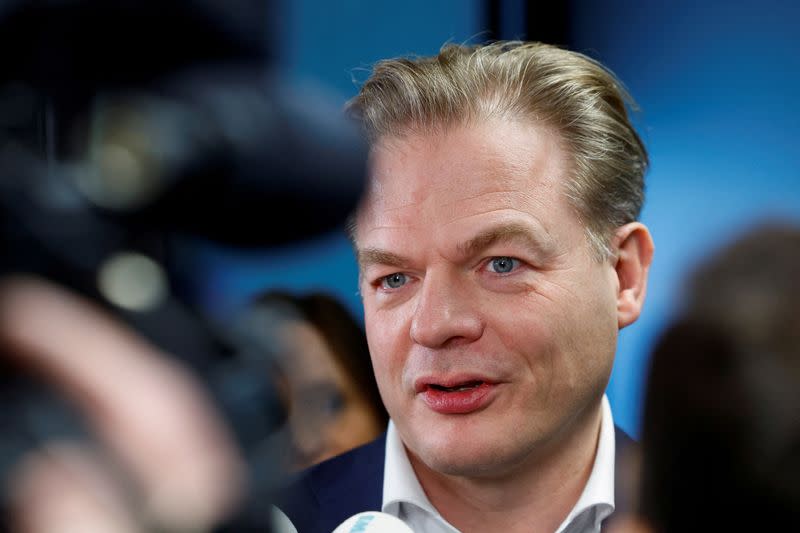Dutch government formation still a puzzle 12 weeks after election
By Bart H. Meijer
AMSTERDAM (Reuters) - Efforts to form a government in the Netherlands are back at square one 12 weeks after an election won by the nationalist Freedom Party (PVV) of anti-Muslim populist Geert Wilders but well short of a majority.
Here's a look at the scenarios left on the table.
RIGHT-WING MAJORITY GOVERNMENT
Since his victory with a quarter of the vote on Nov. 22, Wilders has been trying to form a coalition with the centre-right VVD of outgoing Prime Minister Mark Rutte, the centrist NSC and the farmers protest party BBB. This would create a comfortable majority of 88 seats in the 150-seat Lower House.
But talks failed to gain traction as Wilders struggled to overcome the reluctance of both VVD and NSC to work with him. In a report on the talks issued on Monday, NSC finally pulled the plug, citing what it said was Wilders' lack of respect for the rule of law, an accusation he has dismissed.
The intermediary leading the talks said he still thought an agreement could be possible, but the NSC in its report ruled out joining any coalition with Wilders.
RIGHT-WING MINORITY GOVERNMENT
The most logical step now would be for PVV, VVD and BBB to try to cobble together a minority government, to which NSC chief Pieter Omtzigt said he would consider giving outside support.
The Netherlands is usually governed by majority coalitions that nail down their agreements in detailed government pacts, but there have been minority governments before. The most recent example is Rutte's first government, which functioned with the support of the PVV from 2010 to 2012.
OTHER COMBINATIONS
Theoretically, combinations of parties other than those that were at the table until now could try to form a government, for instance a Green Left-Labour alliance - led by ex-European Union climate commissioner Frans Timmermans - that was the runner-up in the November election.
But Timmermans has excluded working with Wilders, and earlier this month said it was very unlikely his party would play any role in forming the next government.
Without Timmermans' party there is no realistic option for a majority government other than the one tried already.
TECHNOCRATIC GOVERNMENT
If PVV, VVD and BBB fail to agree on a detailed coalition pact, they could opt for a government with looser ties to the parties in parliament, largely consisting of outside experts who would seek shifting majorities in parliament for their policies.
Such a technocratic government was floated by Omtzigt as his preferred option before the election, and after he stepped away from the talks last week, but is untested in recent Dutch history - and could struggle to muster a popular mandate.
BROAD OUTSIDERS GOVERNMENT
Omtzigt has also proposed taking the idea of a technocratic government a step further to allow a larger group of parties to nominate independent figures to a cabinet that would not be bound by agreements with parties in parliament.
This experimental broad coalition would also try to cultivate varying majorities for their proposals.
NEW ELECTION
If no new government can be formed, a new election is an option of last resort. There are no set terms for how long a government formation in the Netherlands can last. The most recent one, in 2021, took a record 299 days to complete.
(Reporting by Bart Meijer; editing by Mark Heinrich)

 Yahoo News
Yahoo News 

